The MGA With An Attitude
REAR PLATES for MGA B-Series Engines - CS-200
- - Identification of B Series Engine Rear Plates - -
It is difficult to determine which rear engine plate should be used for a particular application. This is compounded if a conversion to a different engine is contemplated. The following is a listing of the common B-series rear engine plates for MGA (and some variants). In general, you need to use the engine rear plate that will match the gearbox bellhousing.
MGA Engine Rear engine plates:
The MGA and early MGB engine with 3 main bearings did not use a rubber real oil seal. These backing plates are easy to identify as the hole in the center is 3.95” which is smaller than that used on the later cars with rear oil seal.
There are three common rear plates for these 3 main engines. All are shown from the rear. The indicated measurements are all from center to center of the holes.
MGA low mount starter. 1500 to (c)61503
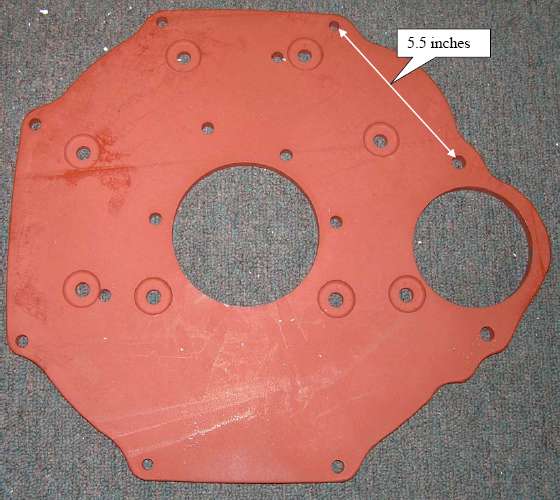
Note that the starter is almost in line with the crankshaft, just above the oil pan.
(The plate shown is a new adapter plate that has the larger center hole for use with a 5 main engine. Otherwise it would have a slightly smaller center hole and four more counterbores as shown below.)
Photos immediately above and below from Kelvin Dodd of Moss Motors
MGA high mount starter. 1500 from (c)61504, 1600, 1622
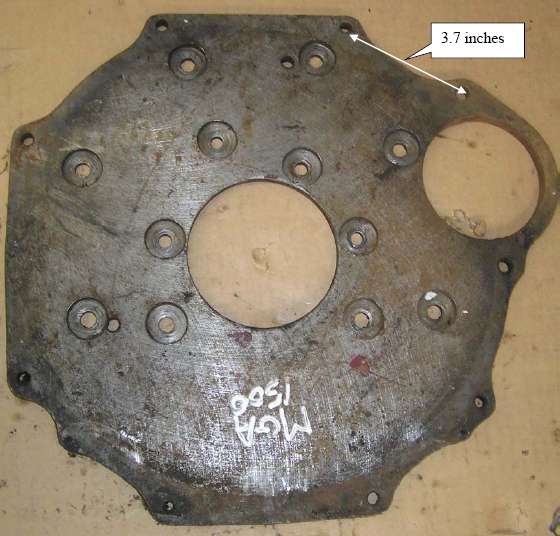
Note that the starter is higher than the crankshaft. To clear the drive of this high mounted starter the transmission tunnel and firewall have a steel bulge which can easily be seen from inside the car. You can install a low mount engine into a later car, but a later high mount engine can not be installed in an early car without modifying the transmission cover and firewall.
MGA high mount starter. Cast iron plate
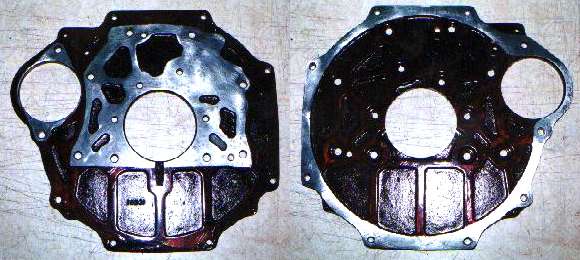
This one is a bit of a mystery (my photos after painting). It is proper configuration to mate with MGA 1600 high starter type gearbox, same as the one immediately above. It was found accompanying a disassembled "barn find" Elva Courier MK-II (originally with MGA 1600 engine and gearbox). Difference here is that the plate is case iron rather than flame cut mild steel. This should save material in manufacture, may be overall cheaper to produce. It will also be slightly lighter weight due to thinner section in the area with ribs. I suspect this part was also used on some other cars in larger volume production, but don't know which models. I notice one extra small hole immediately above the starter position. I speculate that this may be for electrical harness grounding point, as the Courier has all fiberglass body with no steel frame (hardware mounting plates laminated into the fiberglass).
On 1/16/2013, Chris at Octarine Services in the UK wrote:
"I have built quite a few 1622 engines recently, all of them were the AMW (Austin Morris Wolseley) version of the engine, and all had the cast rear plates. My guess is that they were fitted to the saloon cars in the BMC range that used the B series engine".
On 2/5/2013, Russell Goebel in Brisbane, Australia wrote:
"I have just stripped a 1500 motor, which according to the engine number was originally fitted to an Austin Cambridge Mark-II. This also has the cast iron backing plate (high starter position). Assuming the distributor model was as originally fitted (dated November 1960) this would make the car a 1960/61 model. The engine block and cylinder head were cast in Australia, not sure regards the backing plate. Given above it would appear that the cast backing plate was also fitted to 1500 engines from about November 1960".
MGA Twin Cam, all
I thought this was a moot point, but the question came up. I now have pictures of the MGA Twin Cam engine rear plate from four different people. These plates all appear to be identical to the late 1500 / 1600 / 1600-MK-II rear plate. They must be physically interchangeable, so I have no idea why they have a different part number. The Twin Cam was introduced April 1958. The high starter 1500 commenced January 1959.
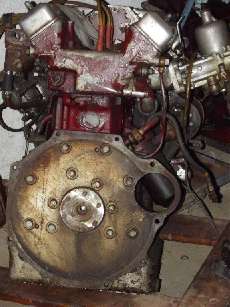
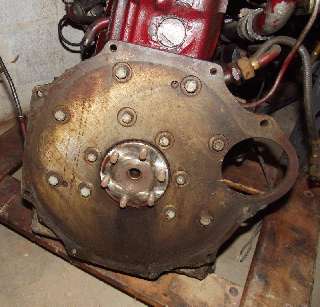
 Twin Cam engine rear plates above and below. Twin Cam engine rear plates above and below.
 Photos above from Stan Heath
. Photos below from Ricky May. Photos above from Stan Heath
. Photos below from Ricky May.
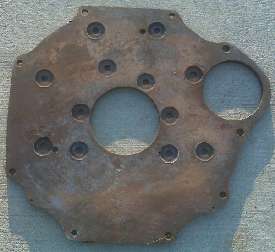

|